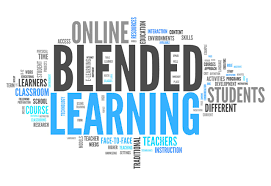- Research has shown that well designed, effective, learning environments are learner centered, knowledge centered, assessment centered and community centered. Fortunately, blended learning models easily accommodate these four key characteristics. (Bransford et al, 2000).
Bransford et al. (2000) shows that the four perspectives are aligned in ways that mutually support one another.

- “Blended learning is a combination of online and face-to-face activities for classroom instruction or other training modalities to help develop new knowledge and skills that can be transferred to the workplace environment.” (Hilliard, 2015, p. 179).
- By moving course lectures and other course materials online, teachers can design more challenging learning activities that promote sustained active learning in the classroom. (Blended Learning with edX, 2016)
- “According to a 2003 survey of “Blended Learning Best Practices” by The Learning Guild, over 85% of organizations are using some form of blended learning for the creation and/or delivery of educational content. The experience of respondents participating in the survey was positive, with more than 76% saying blended learning was more effective than traditional classroom training, and 73% suggested that blended learning had a higher learner value/impact than non-blended processes.” (Hilliard, 2015, p. 180).
REFERENCES
Blended Learning with edX (2016). Retrieved from https://courses.edx.org/courses/course-v1:edX+BlendedX+3T2016/course/
Bransford, J.D., Brown, A.L., & Cocking, R. (2000). How people learn; brain, mind, experience, and school. Washington, D.C.: National Academy Press. Retrieved from https://www.nap.edu/read/9853/chapter/1
Hilliard, A. T. (2015). Global blended learning practices for teaching and learning, leadership, and professional development. Journal of International Education Research, 11(3), 179-n/a. Retrieved from https://search.proquest.com/docview/1704360322
